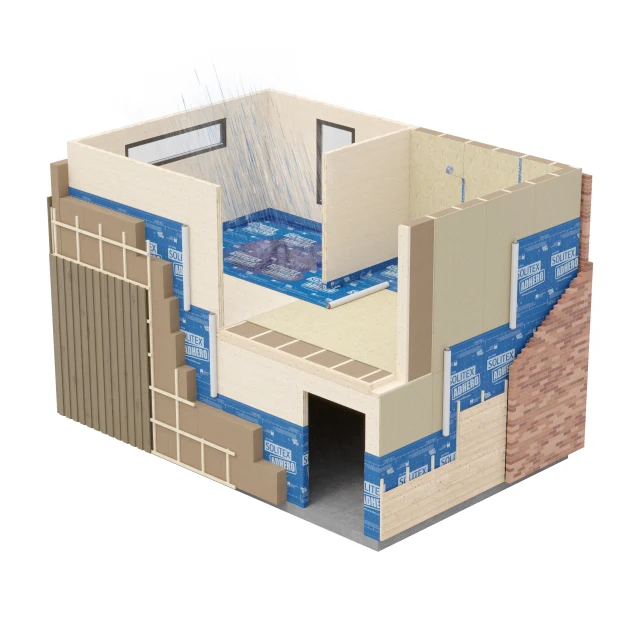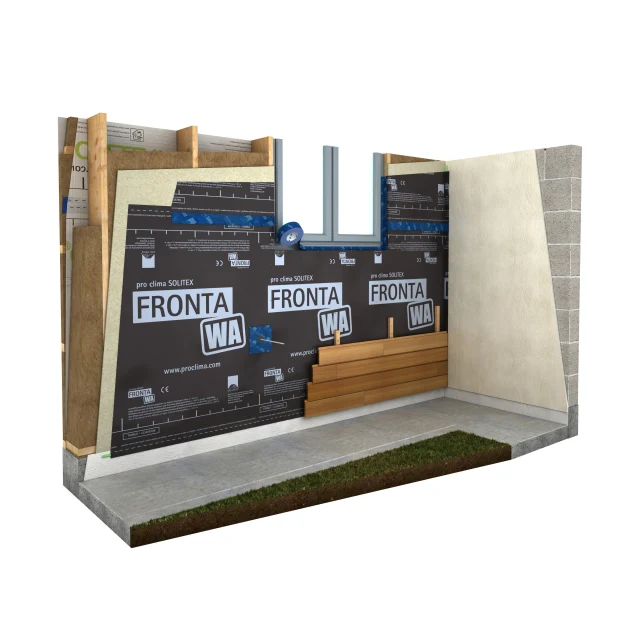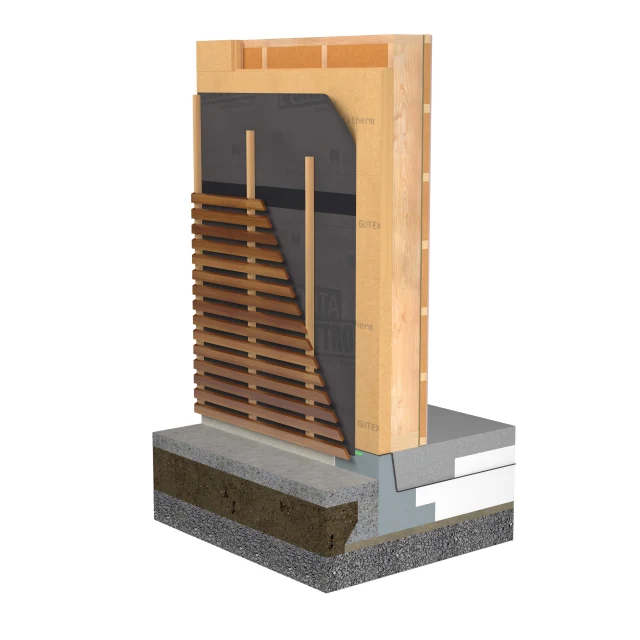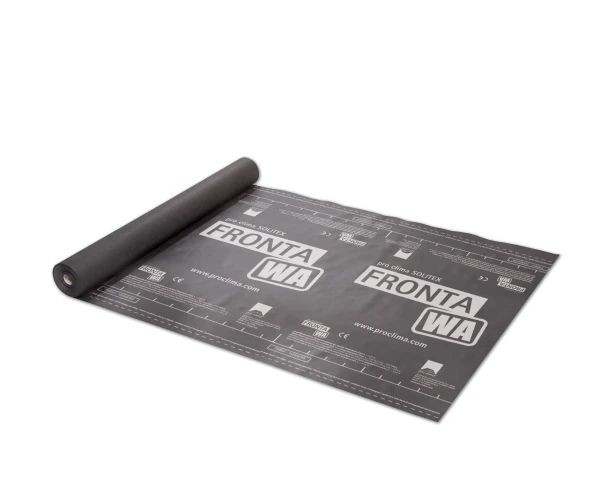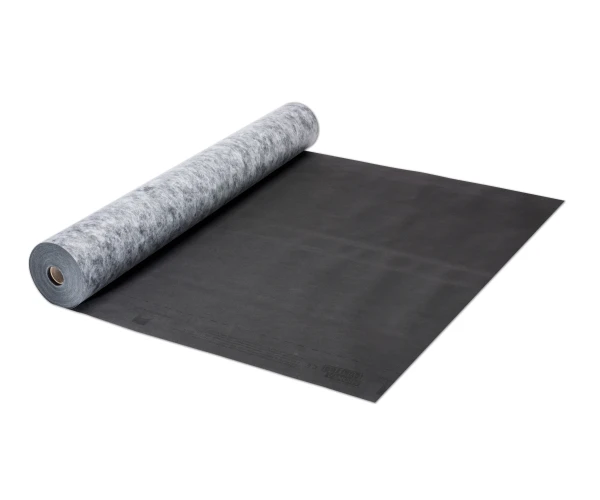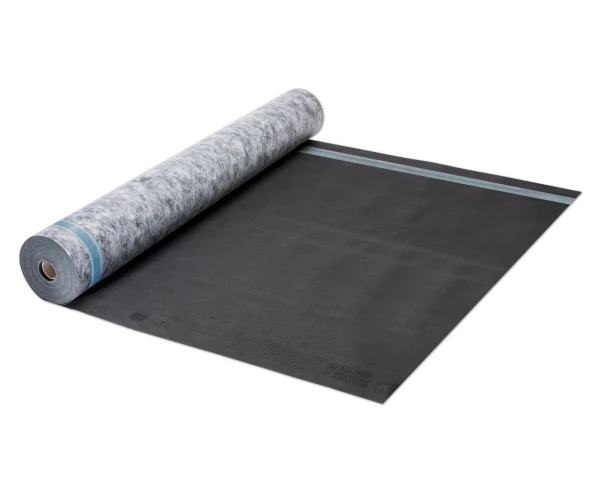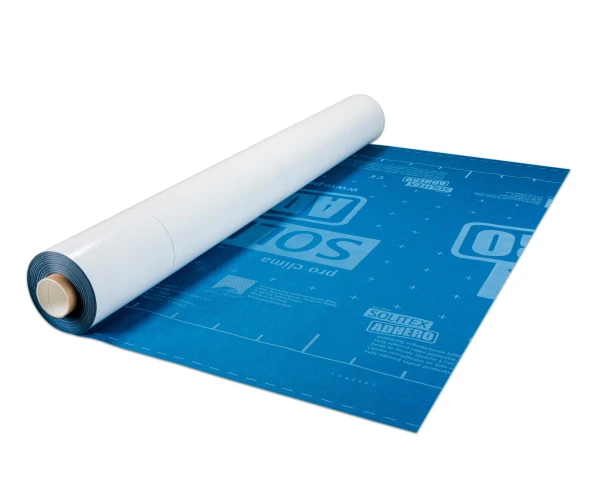Go to Section
- Which breather membrane is most suitable behind timber clad walls?
- What if I need to meet higher levels of fire resistance to meet Part B of the Building Regulations?
- Can a breather membrane be fully adhered to a substrate without additional fixings?
- More information
Which breather membrane is most suitable behind timber clad walls?
Closed jointed
Breather membranes are typically installed to the outer side of the insulation and allow water vapour to escape from inside a building element. This is then extracted by a ventilated cavity between the membrane and external cladding. If opting for closed jointed cladding we recommend using Pro Clima Solitex Fronta WA. This membrane features exceptional breathability, windtightness and weathertightness thanks to its central TEEE monolithic film. The film allows moisture vapour to pass through by a process of diffusion, as opposed to through tiny holes, meaning that the membrane can breathe while remaining fully windtight at the same time. Solitex Fronta WA is NSAI approved and can be left exposed for up to 3 months before the cladding is applied.
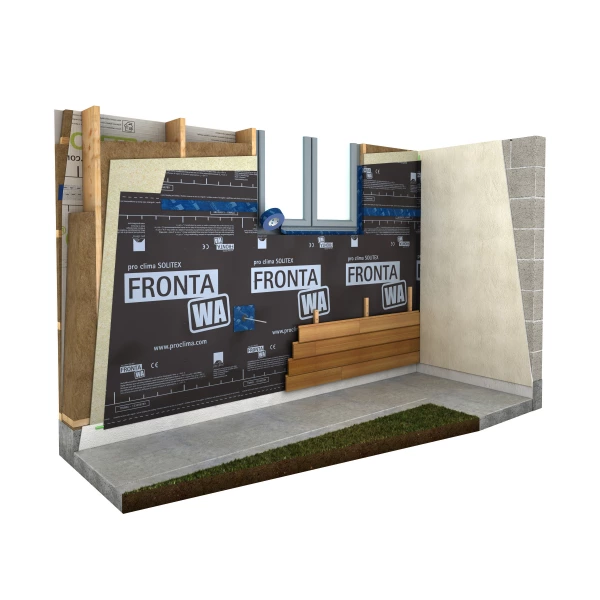
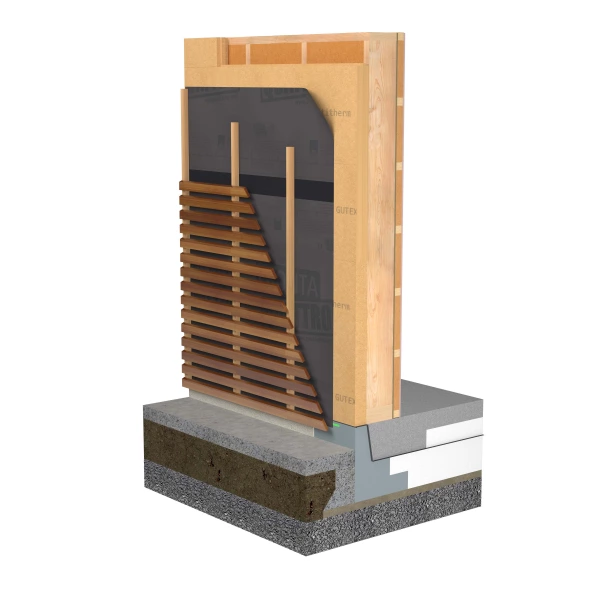
Open jointed
With open jointed cladding the membrane must be able to withstand permanent exposure to UV, and as it will be visible, it must be as inconspicuous as possible. Pro Clima provide a plain black breather membrane called Solitex Fronta Quattro which is perfect for use with open jointed cladding of up to 35mm. It can be left exposed on the walls for up to 6 months before the final cladding is installed and protects against driving rain, UV and radiant heat from the sun. We recommend sealing the membrane overlaps of with Pro Clima Tescon Invis, a discreet airtight tape which is entirely black and has no printed branding on the top. This makes it almost invisible when seen through gaps in the cladding.
What if I need to meet higher levels of fire resistance to meet Part B of the Building Regulations?
In such cases we would recommend applying Solitex Fronta Quattro FB Connect. This membrane is a fire retardant, UV resistant breather membrane which has a Euro fire classification of B-s1, d0. This meets the building regulations in both Ireland and the UK and means that if the membrane is exposed to fire it will not result in flaming droplets.
FB Connect also has a plain black appearance for use with open jointed cladding and has an integrated self-adhesive tape for quick and easy installation. This saves on installation time as there is no need for additional tape to seal membrane overlaps. FB Connect is particularly suitable for use on tall newbuilds where a minimum Reaction to Fire (EN 13501-1) of B-s1,d0 is needed.
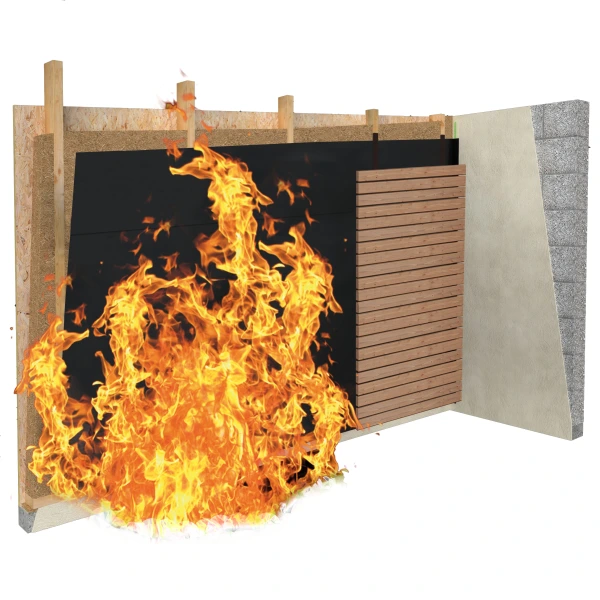
Can a breather membrane be fully adhered to a substrate without additional fixings?
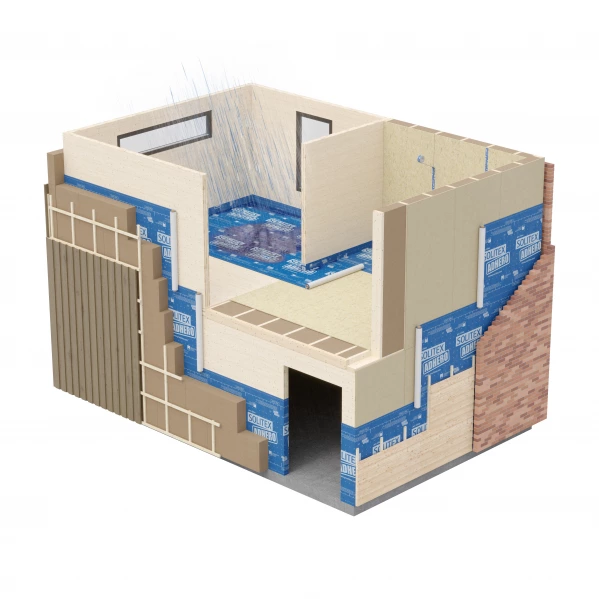
Pro Clima supply a self-adhesive ‘peel and stick’ breather membrane called Solitex Adhero. This membrane features Pro Clima’s unique TEEE monolithic central film and an acrylic self-adhesive, which allows installers to instantly bond the membrane to the substrate. The adhesive can stick to a large variety of building materials such as masonry, plaster, plywood, OSB and even CLT.
The breather membrane can be easily applied by removing a release strip and simply sticking the membrane to the substrate. As the glue is 'pressure activated', it is important to press firmly on the membrane when it is being installed. This can be done using the Pro Clima Pressfix XL. The membrane is then rolled outwards, while removing an additional release strip, and firmly pressed into position. This leads to a more efficient installation without the need for additional fixings.
Solitex Adhero provides high levels of windtightness and resistance to wind-driven rain, along with providing optimum temporary protection to the building envelope before the exterior wall or roof cladding is installed. It also provides significant cost savings by removing the need to 'tent' the structure during the construction phase.

Not all breather membranes are the same. Various breather membranes feature specific characteristics depending on their intended use which should be scrutinised by specifiers. If you would like more information on what breather membrane you should use, please feel free contact us to speak to one of our technical team.



